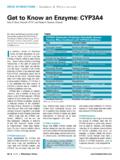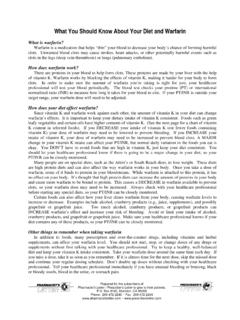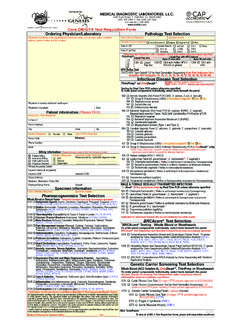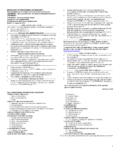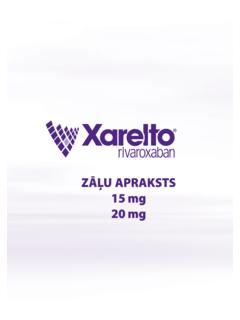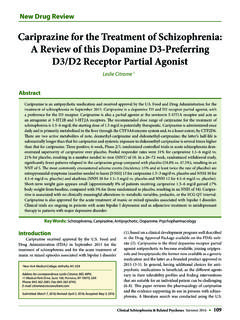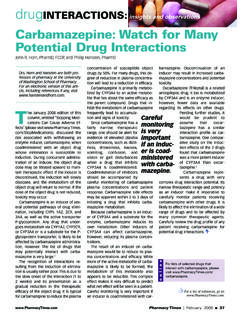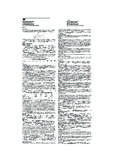Transcription of VESICARE - Medsafe
1 VESICARE Solifenacin succinate Version: 1 DATA SHEET 1. PRODUCT NAME VESICARE . Solifenacin succinate, 5 mg and 10 mg film-coated tablets. 2. QUALIATIVE AND QUANTITATIVE COMPOSITION Each VESICARE 5 mg tablet contains 5 mg solifenacin succinate. Each VESICARE 10 mg tablet contains 10 mg solifenacin succinate. 3. PHARMACEUTICAL FORM VESICARE 5 mg tablet: The film-coated tablet is round, light-yellow and marked with a triangular logo and 150 . VESICARE 10 mg tablet: The film-coated tablet is round, light-pink and marked with a triangular logo and 151.
2 4. CLINICAL PARTICULARS Therapeutic Indications VESICARE is indicated for the treatment of unstable bladder with symptoms of increased urinary urgency, frequent micturition, and/or urge incontinence. Dose and method of administration VESICARE should be taken orally and should be swallowed whole with liquids. It can be taken with or without food, as is convenient. Adults: In adults, the recommended dose is 5mg once daily. If needed, this can be increased to 10mg once daily. Children: Safety and effectiveness in children has not yet been established.
3 Therefore, VESICARE is not recommended for use in children. Patients with Renal impairment: No dose adjustment is necessary for patients with mild to moderate renal impairment (creatinine clearance >30 mL/min). Patients with severe renal impairment (creatinine clearance <30 mL/min) should be treated with caution and receive not more than 5 mg once daily. Pharmacokinetics in patients undergoing haemodialysis has not been studied. Patients with hepatic impairment: No dose adjustment is necessary for patients with mild hepatic impairment.
4 Patients with moderate hepatic impairment should be treated with caution and receive not more than 5 mg once daily. Pharmacokinetics in patients with severe hepatic impairment has not been studied. Strong inhibitors of cytochrome P450 3A4: The maximum dose of VESICARE should be limited to 5 mg when treated simultaneously with ketoconazole or therapeutic doses of other strong cyp3a4 -inhibitors (see Section below). VESICARE Solifenacin succinate Version: 2 Contraindications 1. Hypersensitivity to the active substance or to any of the excipients.
5 2. Urinary retention. 3. Uncontrolled narrow angle glaucoma. 4. Myasthenia gravis. 5. Severe gastro-intestinal condition (including toxic megacolon). 6. Patients undergoing haemodialysis. (See also Section above). 7. Patients with severe hepatic impairment. (See Sections above). 8. Patients with severe renal impairment or moderate hepatic impairment and on treatment with a strong cyp3a4 inhibitor, ketoconazole. (See also Section below). Special warnings and precautions for use Other causes of frequent urination (heart failure or renal disease) should be assessed before treatment with VESICARE .
6 If urinary tract infection is present, an appropriate antibacterial therapy should be started. VESICARE should be used with caution in patients with: 1. Clinically significant bladder outflow obstruction at risk of urinary retention. 2. Gastrointestinal obstructive disorders. 3. Risk of decreased gastrointestinal motility. 4. Severe renal impairment (creatinine clearance < 30 mL/min; see Section above). Doses should not exceed 5 mg for these patients. 5. Moderate hepatic impairment (Child-Pugh score of 7 to 9; see Section above).
7 Doses should not exceed 5 mg for these patients. 6. Concomitant use of a strong cyp3a4 inhibitor, ketoconazole (see Sections and ). 7. Angioedema with airway obstruction has been reported in some patients on solifenacin succinate. If angioedema occurs, solifenacin succinate should be discontinued and appropriate therapy and/or measures should be taken. 8. QT prolongation and Torsade de Pointes have been observed in patients with risk factors, such as pre-existing long QT syndrome and hypokalaemia. 9. Anaphylactic reaction has been reported in some patients treated with solifenacin succinate.
8 In patients who develop anaphylactic reactions, solifenacin succinate should be discontinued and appropriate therapy and/or measures should be taken. VESICARE Solifenacin succinate Version: 3 Interactions with other medicines and other forms of interaction Pharmacological interactions: Concomitant medication with other drugs with anticholinergic properties may result in more pronounced therapeutic effects and side effects. An interval of approximately one week sh ould be allowed after stopping treatment with VESICARE , before commencing other anticholinergic therapy.
9 The therapeutic effect of solifenacin may be reduced by concomitant administration of cholinergic receptor agonists. Solifenacin can reduce the effect of drugs that stimulate the motility of the gastro-intestinal tract, such as metoclopramide and cisapride. Effects of other drugs on the pharmacokinetics of solifenacin Since solifenacin is metabolised by cyp3a4 , pharmacokinetic interactions are possible with other cyp3a4 substrates, inhibitors and inducers. Ketoconazole and other cyp3a4 inhibitors: Simultaneous administration of ketoconazole (200 mg/day) resulted in a two-fold increase of the AUC of solifenacin, while ketoconazole at a dose of 400 mg/day resulted in a three-fold increase of the AUC of solifenacin.
10 Therefore, the maximum dose of VESICARE should be restricted to 5 mg, when used simultaneously with ketoconazole or therapeutic doses of other strong cyp3a4 inhibitors. Simultaneous treatment of solifenacin and a strong cyp3a4 inhibitor is contraindicated in patients with severe renal impairment or moderate hepatic impairment (see Section ). The effects of enzyme induction on the pharmacokinetics of solifenacin and its metabolites have not been studied as well as the effect of higher affinity cyp3a4 substrates on solifenacin exposure.











